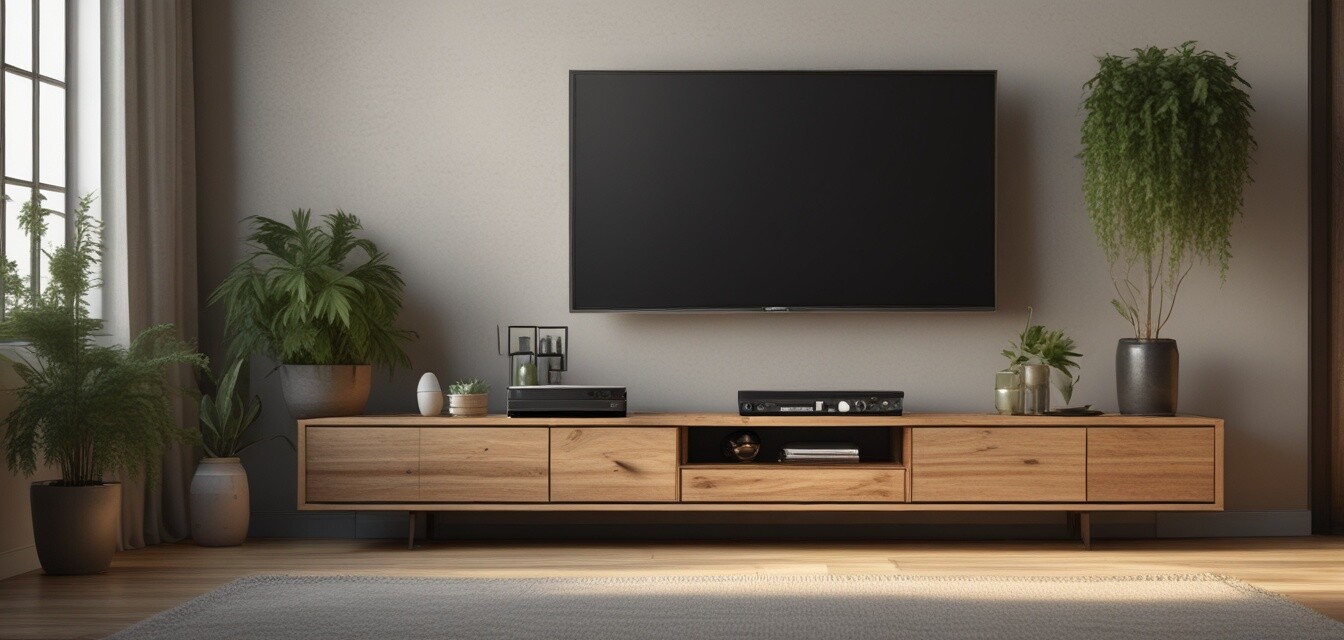
How to Opt for Sustainable Furniture When Renovating
- Understand the significance of sustainable materials.
- Choose TV stands made from recycled or responsibly sourced materials.
- Consider the entire lifecycle of the furniture.
- Incorporate design elements that enhance sustainability.
- Research brands committed to eco-friendly practices.
Renovating your home is an exciting journey that allows you to create a space that you truly love. However, it also serves as a unique opportunity to make eco-friendly choices that are good for the planet. When it comes to selecting furniture, particularly TV stands, understanding sustainable options can transform your renovation from ordinary to truly green. In this guide, we’ll walk you through essential tips and considerations to make informed decisions about sustainable furniture.
The Importance of Sustainable Furniture
Sustainable furniture is more crucial than ever, especially in an age where environmental concerns are at the forefront of our minds. Here are some key reasons why opting for sustainable furniture is beneficial:
- Environmental impact: Sustainable furniture minimizes the negative impact on natural resources.
- Health benefits: Eco-friendly furniture often contains fewer harmful chemicals and toxins.
- Support for responsible manufacturing: By choosing sustainably made products, you support ethical labor practices.
- Durability: Many sustainable materials are significantly more durable than conventional options.
What to Look for in Sustainable Furniture
When you’re on the hunt for sustainable furniture, consider the following criteria:
| Criterium | Description |
|---|---|
| Material | Look for furniture made from reclaimed wood, bamboo, or recycled materials that have a lower environmental footprint. |
| Certifications | Furniture that has certifications like FSC (Forest Stewardship Council) or Global Organic Textile Standard (GOTS) ensures responsible sourcing. |
| Manufacturing Processes | Research the manufacturing processes to ensure they are efficient and sustainable. |
| Brand Values | Choose brands that prioritize environmental responsibility and ethical labor practices. |
Tips for Choosing Sustainable TV Stands
1. Prioritize Eco-Friendly Materials
When selecting a TV stand, choose options made from materials like:
- Reclaimed wood: Preserves trees and uses materials which might otherwise go to waste.
- Bamboo: A fast-growing plant that requires minimal resources to cultivate.
- Metal and glass: These materials can be recycled and are often durable.
2. Consider Vintage and Second-Hand Options
Opting for vintage furniture not only saves money but also reduces demand for new products, thus conserving resources. Check out second-hand stores or online marketplaces where you can find unique pieces with character.
3. Design Matters
When selecting a design, consider one that incorporates versatility. Modular TV stands allow you to adjust your living space and adapt to changing needs, promoting longevity in use.
4. Think About Life Cycle
Assess not only the materials used but also how the furniture is produced, packaged, and delivered. Selecting options with minimal packaging and a focus on local manufacturing supports sustainable practices. To dive deeper into eco-friendly living practices, visit our Eco-Friendly Living section.
Exploring Sustainable Brands
Research brands dedicated to environmental responsibility. Some popular brands known for their commitment to sustainability in furniture include:
- West Elm
- IKEA's eco-friendly line
- Room & Board
- Vermont Woods Studios
Maintenance Tips for Sustainable Furniture
Once you've chosen your sustainable furniture, proper maintenance is key to ensuring its longevity:
- Regular cleaning: Use eco-friendly cleaning products that won’t harm the finish.
- Conditioning: For wood furniture, occasional conditioning helps maintain the material's integrity.
- Repair over replace: Instead of replacing damaged furniture, consider repairs to extend its life.
Conclusion
Choosing sustainable furniture for your renovation project not only benefits you but also contributes positively to the environment. By prioritizing eco-friendly materials, supporting responsible brands, and considering the lifecycle of your furniture, you can create a beautiful space that’s kind to our planet. Explore our guides on buying sustainable furniture and discover more ways to enhance your living space sustainably.
Pros
- Use of sustainable materials promotes environmental responsibility.
- Can save money by opting for second-hand or vintage options.
- Durable and often higher quality compared to conventional furniture.
Cons
- Can be more expensive upfront than mass-produced options.
- Availability may vary depending on local stores.
- Requires research to find truly sustainable options.